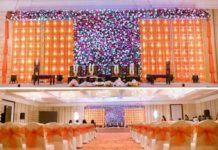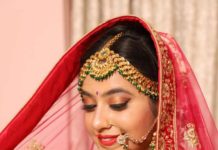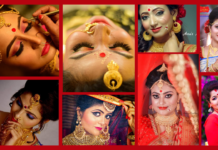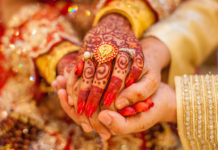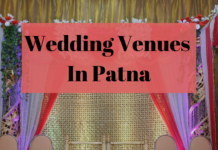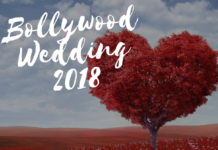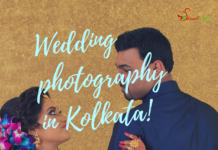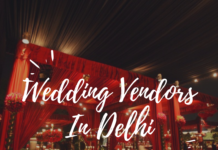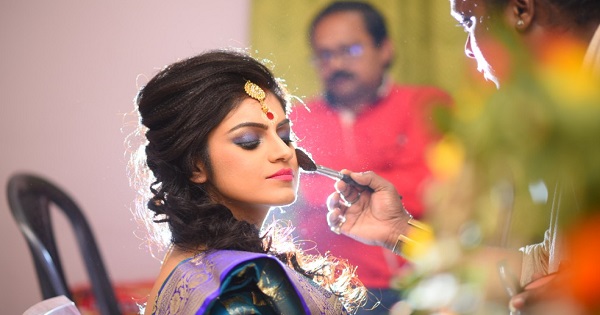Marriages in India are very women-centric. Whenever we think of a wedding, we only think of the beautiful bride her looks, her lehenga is like, her hairdo, her makeup and everything else. But what about the majestic groom? Why does he get less attention from everybody? Well, I guess that’s because they are way too choosy and Lazy on putting on one’s best clothes.
Time has changed now grooms have finally got their mindset and they know how important it is for them to look good at their spousal. Grooms now have a lot of options. There are numerous designs available in the market for them. All of them are wonderfully and intricately designed.
1. Bengali Grooms: Bengali groom wears kurta and dhoti which is known as Punjabi. While the Panjabi is made from various materials like Cotton, Silk or Tussar, the Dhoti is generally made of Tant. The Punjabi features gold or sometimes diamond studded buttons. The groom wears sandalwood paste on his forehead. He also wears a conical head adornment known as the ‘Topor’. He also wears a crown made of tuberoses and roses. When he participates in the wedding they have to change into fine silk two-piece attire known as the ‘Jor’. The groom is to carry around a brass object with long handle known as the ‘Darpan’ at all times.
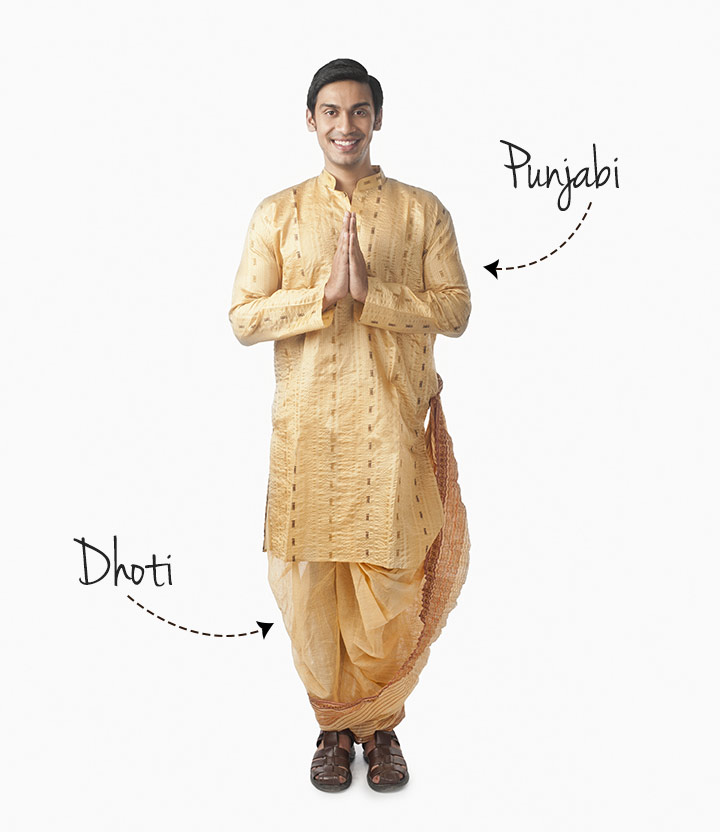 Pic credit: Bridal box
Pic credit: Bridal box
If you have a problem with arranging wedding vendors in Kolkata, you can find them at Shaadicart
2. Malayali Groom: Kerala groom dress comprises of a white mundu. Mundu is a traditional garment worn in the lower part of the body – starting from the waist and touching up pretty much to the toes with a Kaesong cotton twin cloth with the silk border. Dress code varies from community to community. For example in a Christian community in Kerala, you will find the groom wearing a mundu with a white shirt in their ceremony. There has also been a growing trend towards western wear, sherwanis, and even fusion wear in a different community of Kerala.
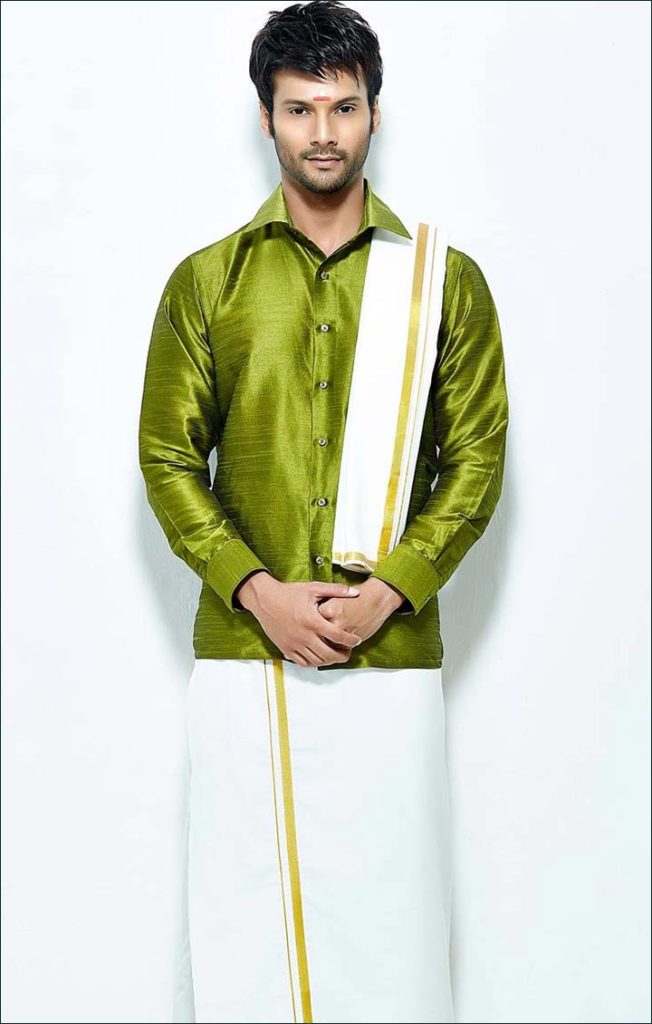 Pic Credit: The bridal box
Pic Credit: The bridal box
3. Assamese Groom: The Assamese people likes to celebrate this event in a lavish manner. People from both the side wear authentic traditional wedding attire which adds color to Assamese wedding. Men traditional attire includes Kurta, Dhoti, and Cheng, an Assamese style shawl that is to be draped around the neck gifted by the bride’s family. All these are preferably made of Muga silk a specialty of Assam. The groom’s attire is traditionally accessorized by a flower garland(crown) and Indian Basil(Tulsi) garland.
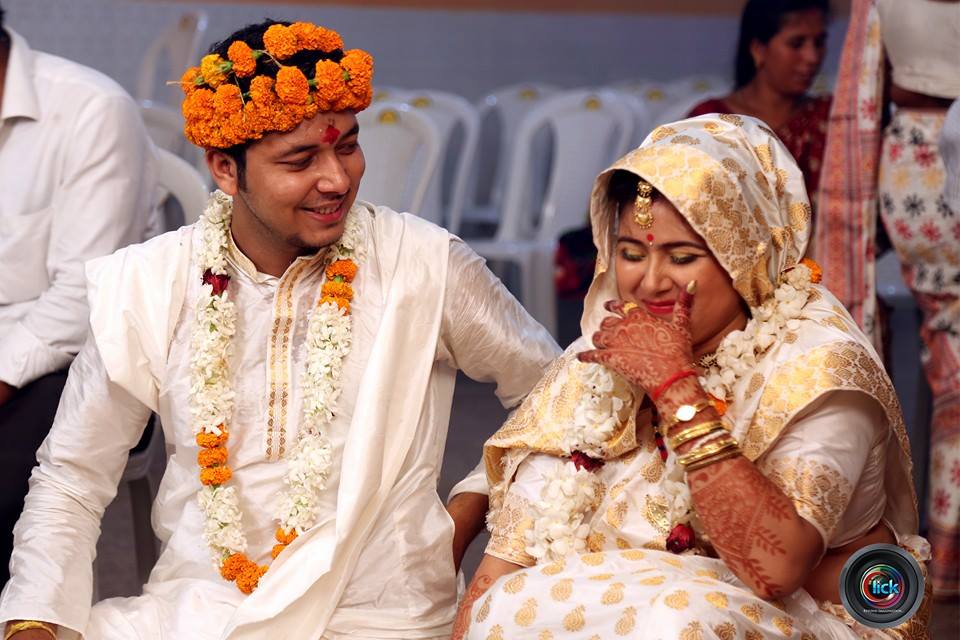 Pic credit: Guwahati Express
Pic credit: Guwahati Express
4. Buddhist Groom: Like the Buddhist religion, Buddhist Weddings are also deeply spiritual affairs where the emphasis is more on the realization of the vows than rigid religious practices. Buddhist weddings are slightly different. There are no rigid set of ritualistic guidelines to be followed during a Buddhist wedding from their scriptures as marriage is generally not seen as a path for salvation by Lord Buddha. Buddhist religion does not dictate a specific dress code for the couple during their wedding ceremony. It is believed that the wedding attire is suitable and complying with the culture. There is no particular color code for the dresses although black is generally avoided as it is considered inauspicious. The groom and bride both wear Bhaku, but in case of the groom, it is just above the ankles. It is worn with a waistcoat which is popularly known as Lajtha. He also wears a cap made of matching brocade and a sash around the waist. Buddhist marriage is considered to be a personal choice and not a religious duty, like in any other religion they have full freedom to decide what sort of wedding ceremony they want.
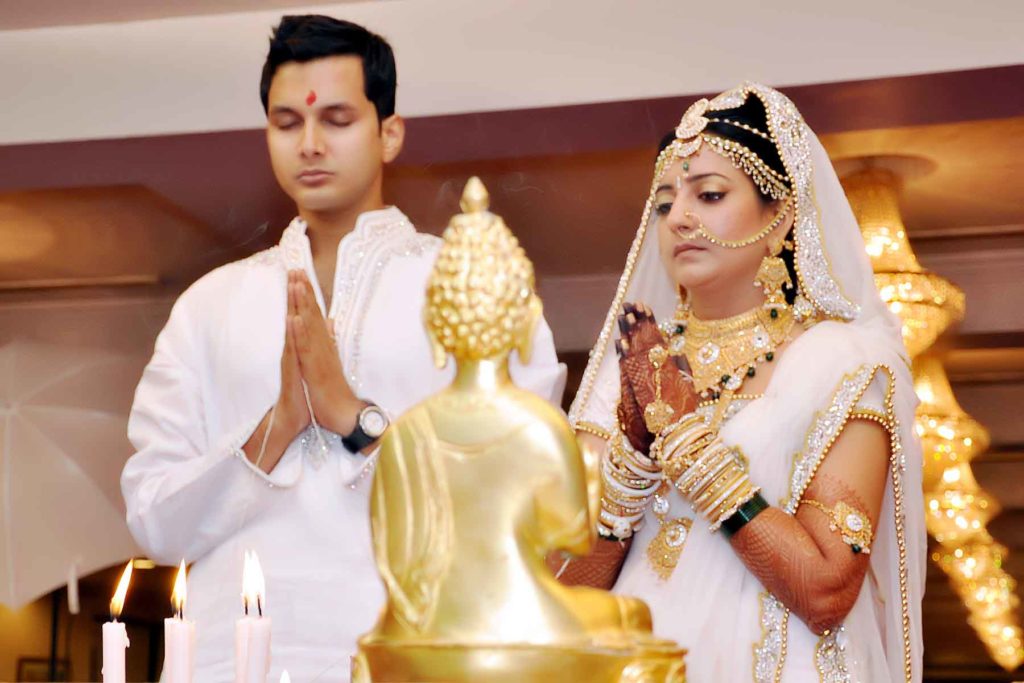 Pic Credit: Rich Digital Lab
Pic Credit: Rich Digital Lab
5. Kannada Groom: Weddings in the Karnataka are mostly simple, focused mainly on traditional rituals. Kannadigas prefer to adhere to age-old traditions when it comes to wedding rituals that go back several years in time. The rituals vary slightly in different regions and among various communities of Karnataka, The weddings for a Brahmin and non-Brahmin are always different in any kind of culture but the basic structure of the entire marriage remains same. Kannadigas are rigid to tradition when it comes to the wedding attire. The groom dresses up in a white veshti or dhoti worn in typical south style. It is made up of simple cotton or may be made of silk, with thin but gaudy borders. They pair the veshti with a white kurta or sherwani, but during the wedding rituals, the groom has to wear a white silk scarf matching with his veshti known as Angavestram. He has to wear a turban-like headgear known as Pheta or Pitambar, which may be white or orange in color which he caries-like a pride. The groom carries a stick in his right hand and the stick needs to be blessed by the priest in a temple prior to the wedding day.
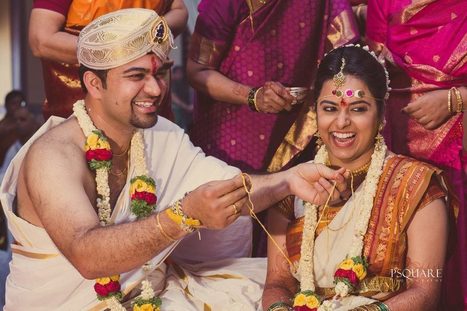 Pic Credit: Scoopi.it
Pic Credit: Scoopi.it
6. Gujarati groom: A Gujarati wedding is a mix of tradition, colors, and rituals that reflect the vibrant and rich culture of Gujarat. An affair with numerous pre and post wedding functions mark the celebration of a Gujarati wedding. Like many other parts of the country, a Gujarati bride adorns a distinctive Gujarati saree(Panetar and Gharchola) on her wedding day while the groom wears the traditional dhoti and kurta.
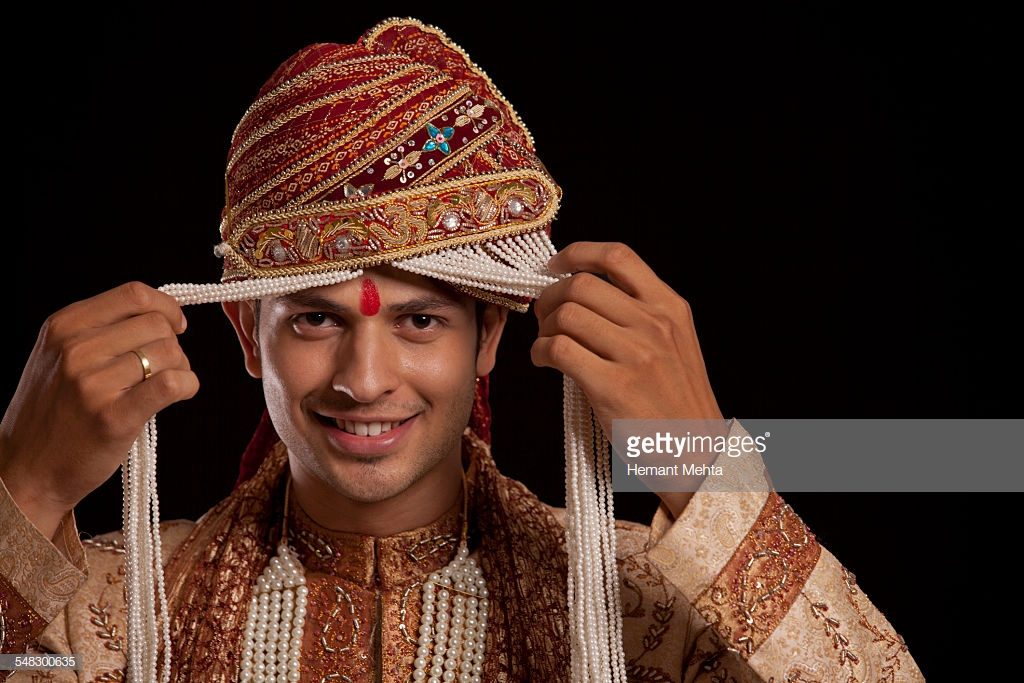 Pic Credit: 123RF.com
Pic Credit: 123RF.com
7. Kashmiri groom: Kashmir is known for its beauty. Wedding in Kashmiri culture is a sign of tradition and beauty. The traditional dress worn by the Kashmiri groom is known as Pheran which is in form of a long gown. A turban called Goldstar is tied on the groom’s head by one of the maternal relatives. They are supposed to wear a particular kind of shoe of the region known as Paazar. He also wears jewelry particularly a necklace made of gold, pearls or precious stones around his neck. The final effect is quite regal and elegant.
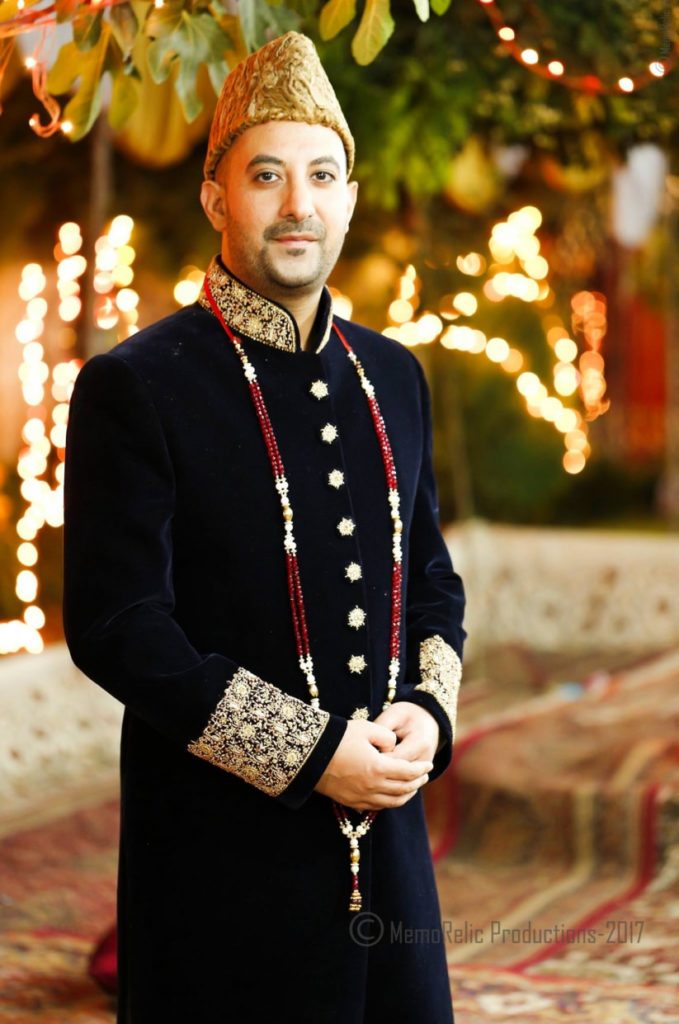 Pic Credits: Memorelic productions
Pic Credits: Memorelic productions
8. Maharashtrian groom: Though Marathi people are known for their traditions and being very strict with the customs, the Marathi weddings are simple family affairs with close friends and well-wishers. They are not as loud or as extravagant as many other traditional Indian weddings. Maharashtrian groom wear ideas range from a dhoti and a kurta (traditional choice) to a kurta pajama or a sherwani or a suit. The dresses are simple and the styles are consciously fine. There is no particular Color but color choices can range from deep pastel shades or rich colors for the bride with the groom generally opting for fine and light matching shade or a collection of cream, gold, white or off-white for his kurta and dhoti.
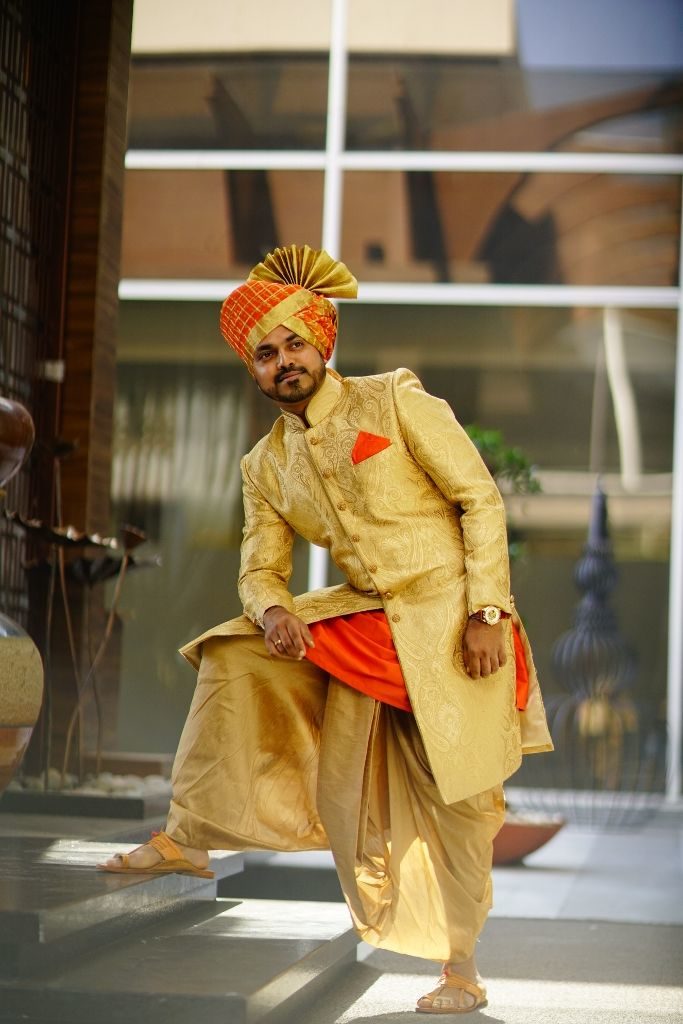
Pic Credit: Looksgud.in
9. Marwari Groom: In modern time, Marwaris are one of the biggest business communities of India. Wealthy and prosperous, weddings in the Marwari community are expensive affairs with celebrations spanning for days. They are elaborate and sparkly where a display of wealth during a wedding is unmistakable but done in a ritualistic way. The traditional Marwari groom wears an achkan over which he generally put on a Jodhpuri or a sherwani. Groom wears a turban made of traditional Marwari red bandhani printed cloth. The turban is wrapped by a traditional jewelry known as Sarpech. He wears a pair of Rajasthani footwear (jootis). He also covers his neck with necklaces either made of gold or a string of pearl or even a Jadau piece. The whole look of a Marwari groom looks royal and glorious.
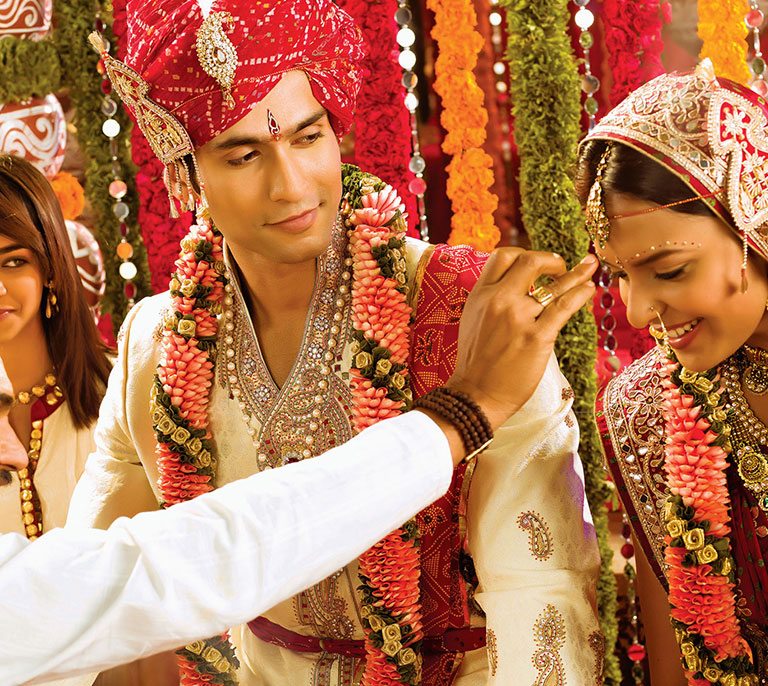 Pic Credits: Malabargoldanddiamonds.com
Pic Credits: Malabargoldanddiamonds.com
10. Pahari Groom: Kumaoni or Garhwali are two ethnic communities in Uttarakhand their weddings are very simple, although the various rites and rituals before, during and after the wedding are quite intricate. The traditional costume of the groom in Uttarakhand is the kurta dhoti or pajama-kurta along with the traditional headgear for the weddings in Uttarakhand but now as time has changed they also experiment for modern groom wear.
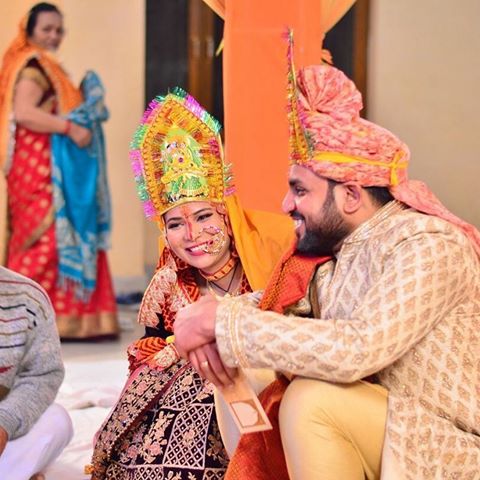 Pic Credit: Imgrum
Pic Credit: Imgrum



